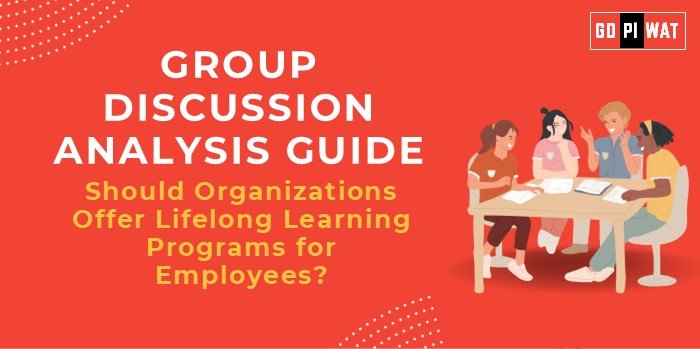📋 Should Organizations Offer Lifelong Learning Programs for Employees?
🌐 Introduction to Lifelong Learning Programs
In an ever-changing global economy, technological advancements, automation, and evolving job roles have made upskilling and reskilling essential. Lifelong learning programs have emerged as a strategic tool for organizations to maintain a competitive workforce.
Topic Background: Lifelong learning refers to continuous education programs offered by organizations to help employees develop new skills. With the World Economic Forum predicting that half of the global workforce will require reskilling by 2025, companies face growing pressure to invest in lifelong learning as a core part of human capital development.
📊 Quick Facts and Key Statistics
- 📈 Reskilling Requirement: 50% of employees will need reskilling by 2025 (WEF Report, 2023).
- 🔍 Skill Gap: 87% of executives report skill gaps in their workforce (McKinsey Global Survey).
- 💰 Return on Investment (ROI): Companies investing in training programs see 24% higher profit margins.
- 🔒 Employee Retention: 94% of employees stay longer at companies investing in learning and development (LinkedIn Learning Report).
- 🌍 Global Trend: Countries like Germany and Singapore prioritize lifelong learning through government and corporate partnerships.
👥 Stakeholders and Their Roles
- 👔 Organizations: Design and implement learning programs to address skill gaps and improve productivity.
- 👩💻 Employees: Participate in upskilling opportunities to enhance their career growth and adaptability.
- 🏛️ Governments: Facilitate policies, incentives, and frameworks to promote skill development.
- 📚 EdTech Platforms: Provide tools and courses for personalized, flexible, and scalable learning solutions.
🏆 Achievements and Challenges
🌟 Achievements
- 📈 Enhanced Productivity: Companies like Amazon and Infosys have upskilled thousands of employees, leading to improved innovation and performance.
- 💼 Employee Satisfaction: Learning programs improve job satisfaction and retention rates by fostering professional growth.
- ⚡ Competitive Edge: Organizations with skilled employees can adapt faster to market changes and disruptions.
- 🌍 Global Examples:
- 🇸🇬 Singapore: Offers a national “SkillsFuture” program to encourage lifelong learning across industries.
- 🇩🇪 Germany: The dual education system combines formal education with on-the-job training.
⚠️ Challenges
- 💰 Cost Constraints: Smaller organizations may struggle to fund continuous training programs.
- ❌ Employee Resistance: Lack of motivation or fear of failure can hinder participation.
- 📊 Measurable ROI: Difficulty in quantifying the benefits of lifelong learning over the short term.
- 💻 Technology Adoption: Not all employees are equally comfortable with digital learning tools.
🗣️ Structured Arguments for Discussion
- ✅ Supporting Stance: “Lifelong learning programs help organizations address skill gaps, improve retention, and prepare employees for the future of work.”
- ❌ Opposing Stance: “Not all organizations can afford lifelong learning programs; the return on investment may not justify the cost.”
- ⚖️ Balanced Perspective: “While lifelong learning is critical, organizations need to strike a balance between affordability and ensuring learning aligns with business goals.”
💡 Effective Discussion Approaches
📌 Opening Approaches
- 💬 “According to the World Economic Forum, 50% of employees will require reskilling by 2025. This highlights the urgency for lifelong learning programs to stay competitive.”
- 📖 “Let’s take the example of Singapore, where national policies encourage continuous education, ensuring a future-ready workforce.”
↔️ Counter-Argument Handling
- 💰 Cost Concern: “Although there’s an upfront cost, companies investing in learning have reported higher profit margins and employee retention.”
- 🧠 Employee Resistance: “Companies can foster motivation by linking skill development to promotions and career advancements.”
📋 Strategic Analysis of Strengths and Weaknesses
📊 SWOT Analysis
- 💪 Strengths: Enhances workforce adaptability, improves employee morale and loyalty, provides a competitive market edge.
- ⚠️ Weaknesses: High upfront investment, limited participation due to resistance.
- 🌟 Opportunities: Collaboration with EdTech platforms for cost-effective learning, government incentives for skill development.
- 🚧 Threats: Rapid technology changes may render skills obsolete, smaller organizations may lag behind in implementation.
🎓 Connecting with B-School Applications
- 📂 Real-World Applications:
- Strategy development for HR and talent management projects.
- Exploring EdTech collaborations in operations and innovation themes.
- 💡 Sample Interview Questions:
- ❓ “How can organizations measure the ROI of lifelong learning programs?”
- ❓ “What strategies can smaller organizations adopt to implement continuous learning?”
- 📖 Insights for B-School Students: Understanding lifelong learning helps align leadership skills with future workforce challenges and promotes innovative thinking for HR strategy, CSR initiatives, and change management roles.


